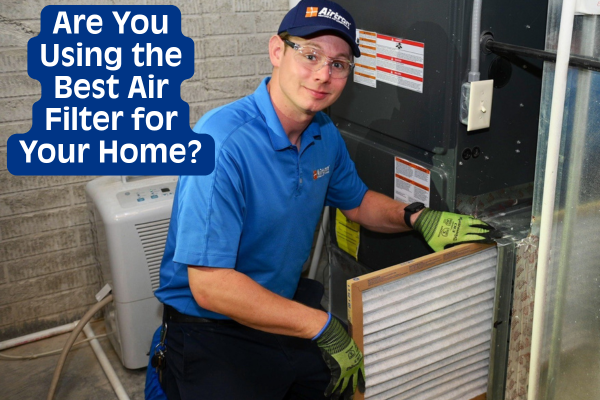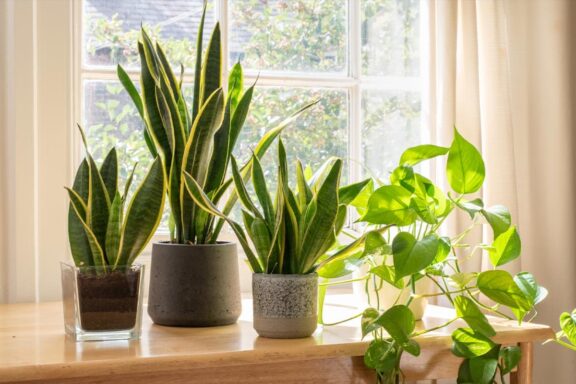Are You Using the Best Air Filter for Your Home?
HVAC Services & Maintenance Indoor Air Quality & Home Comfort

The leaves are turning and the air is starting to feel crisp. But before you can relax with that pumpkin spice latte, there’s something you need to consider: you might be ready for fall, but is your HVAC system? Fall is a critical season for both your air conditioner and your heating system. It’s the time you scale back on blasting the cold air, and start preparing for chilly evenings and frosty mornings. It’s also the time you start to look ahead to the long winter, and you want to know your furnace will be ready to keep you and your family toasty warm.
Using the mild autumn months to winterize your cooling system and prepare your furnace or heat pump is a smart move, and one that could save you a lot of money and hassle down the road. Here, we’ll offer a checklist you can use to get your HVAC units ready for a long rest or months of hard work, why seasonal maintenance matters, and how to spot signs of trouble before they become major problems.
And don’t worry. We’ll still be in the midst of PSL season when we wrap up.
Fall HVAC Maintenance Checklist
Make sure your entire HVAC system is ready for cooler weather and check off these to-dos for both your air conditioner and your furnace:
Shutting Off AC Power for Winter
You may think you don’t need to do much more than turn off the AC and crank up the temperature when the weather changes, but there’s still plenty of regular maintenance your AC unit needs so it can be ready to roll come springtime. Follow these tips to get it properly winterized:
- Remove dirt and debris from the outdoor unit:After heavily relying on your A/C unit during the summer, chances are debris has accumulated in certain parts of the unit. Make sure you clean your unit to help it operate effectively in the cooler temperatures. Outdoor condenser coils become dirty due to the presence of foliage nearby or a dusty environment. Remove any debris around the coil and trim foliage back at least 0.6 meters (2 feet) to allow sufficient airflow around the condenser.
- Replace your air filters:Fall is an ideal time to start with new air filters. Replace your dirty filters with new ones to keep your unit running at 100% efficiency. Dirty filters reduce indoor air quality and overall efficiency of your entire air conditioner. They can also cause damage to the heat-absorbing parts of your system, leading to costly repairs. Therefore, replacing your filters also saves you money in the long run.
- Insulate refrigerant lines: Identify the exposed refrigerant lines and cover them with foam insulation before the temperature drops too far. This will prevent condensation from freezing on the lines and causing damage.
- Cover the unitWhen you’re done using your AC for the season, cover your unit completely with waterproof material to protect it from falling leaves, water, and dirt.
Preparing Your Furnace for Winter
At the same time you’re winding down your air conditioner, it’s also your opportunity to check out the rest of your HVAC equipment and make sure your furnace is up to the task ahead. Here are the steps to check off your list:
- Clear registers and vents: Before it’s time to start using your furnace, make sure there’s no furniture, curtains, or other objects blocking your vents. This will ensure your airflow isn’t restricted and your home can be properly warmed.
- Clean up around the furnace: Make sure there isn’t debris, trash, or combustible materials near your furnace unit. These could present a fire hazard and can prevent your furnace from operating efficiently.
- Inspect the flue pipe: Your flue pipe vents the combustible gases from a gas furnace to the outdoor air. It can corrode or wear over time, so be sure to check for rust, holes, or other signs of damage.
- Test your carbon monoxide detector: Every home that has a fuel-burning HVAC unit should have one or more carbon monoxide detectors installed on every level of the home. These devices should be tested once a year before you fire up the furnace for the first time, so fall is the perfect opportunity.
- Look for ductwork air leaks:Your ducts move warm air throughout your home in winter, so you want to make sure that air isn’t escaping anywhere. Visually inspect your ducts wherever you can access them to seal up any gaps or potential leaky spots.
- Test out the system: At least once before really cold weather hits, turn on the heat and test out your thermostat, making sure it cycles on and off as it should.
- Schedule an HVAC inspectionAn excellent way of preparing for the cooler months is by scheduling an HVAC inspection. During the checkup, an HVAC technician will assess the components of your system. Faulty components will be identified and repaired or replaced, enhancing the overall performance of your unit.
Benefits of Regular HVAC Maintenance
All of the tips listed above are considered standard preventative maintenance for air conditioners and heating systems, but why are these steps so important? Here’s what you’ll stand to gain if you follow these tips every year:
- You will increase your energy efficiency which will save you money on your energy bills.
- You’ll reduce wear and tear on your HVAC system, lengthening its lifespan and avoiding costly breakdowns.
- Setting a regular maintenance plan will help you stay on top of any issues so you can get them looked at before they become major problems.
- Your home and family will be safer and more comfortable year-round.
- You’ll already have a good idea of the state of your system, so there won’t be as much risk of unexpected and unpleasant surprises at your annual tune-up.
Detecting Common HVAC Problems and Warning Signs
HVAC maintenance is critical, and some of it you can DIY. But it’s important to know when something is no big deal vs. when it’s a ticking time bomb. Be on the lookout for these red flags, and if you find them, be ready to call in an HVAC professional:
Listen for Unusual Noises
All HVAC units make some noise, but if you hear loud, unusual sounds you haven’t noticed previously, there could be a problem. Squealing, grinding, or hissing sounds aren’t normal and could indicate a component inside the unit has come loose or has been damaged. It’s important to call in an HVAC technician at this point, so you don’t cause further damage to the unit.
Be Aware of Weak Airflow
If you notice there’s a lack of consistency in the temperature of your home, or you can feel that the airflow isn’t as powerful as it used to be, you could have a clog or blockage somewhere. Check the vents and registers for obstructions first, but if that isn’t the issue, you may want to try replacing your air filter or testing your blower motor.
Use Your Sniffer
Just as with strange sounds, unusual odors coming from your HVAC may be cause for concern. Anything that smells sulfurous or damp could be a sign of a deeper problem. If you’re concerned about a possible gas leak, exit the home right away and call a professional. If the odor is mildew-y or musty, you may want to check for leaks and possible mold.
Time Heating or Cooling Cycles
Short cycling happens when your thermostat causes your HVAC system to kick on and off too frequently. If there isn’t much time between cycles and your house doesn’t feel as cool or warm as it should, test out your thermostat first. Causes of short cycling could also be a clogged air filter, or a unit that isn’t large enough for the size of the home.
BONUS: Spring Startup Preparation Checklist
It’s never too soon to start planning for warm weather (because you’ll really be yearning for it in a few months). Remember that while you may only schedule a professional tune-up for your HVAC system annually, preventative maintenance is a year-round task. Once spring has sprung, be ready to do the following to wake your AC unit up from its long winter nap:
- Replace your air filter.
- Remove the AC cover and turn on the electrical switch or circuit breaker.
- Test out the unit and run it through a few cycles to make sure the thermostat, outdoor unit, and all components are working properly.
- Clear out all the debris that has accumulated around the outdoor unit through the winter.
- Clean out the condensate drain line.
- Inspect indoor vents and registers and move any obstructions.
- Check the drain pain for mold and clean it out if needed.
Be Ready for Every Season with Help from Airtron
Follow these handy tips to prolong the lifespan of your air conditioner and prevent any inconvenient repairs during fall and winter. And remember that while you can DIY some of these checklist items, you don’t have to be on your own when it comes to HVAC maintenance. Our Essential HomeCare packages are designed to catch issues before they become big problems, and to keep your HVAC system running smoothly all year long. Check them out and schedule your fall tune-up today!


